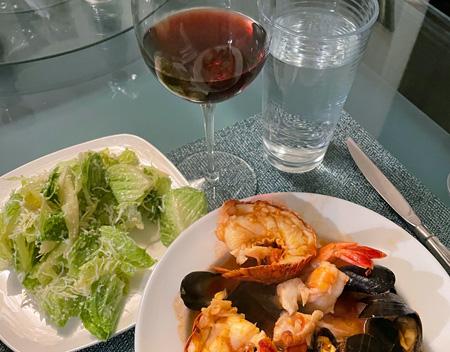
First, let’s pronounce it right… It’s not “Cin-salt”, but rather “San-soh”. Now that we have this behind us we can discuss this ancient grape variety that appears to have been first cultivated near the southern French coast around Montpellier. Its Mediterranean heritage was spread by a millennium of wine-loving seafarers ranging from the Languedoc-Roussillon in southern France, cross the Mediterranean waters to Algeria and Morocco, then eastward to Lebanon. To say that this is a sun-loving Mediterranean grape would be an understatement.
“For me, Cinsault is a lot like Grenache”, says C.L. Butaud’s owner and winemaker Randy Hester. In Texas, it shows much better when we lean into its pretty varietal character, showing off the delicate fruit profile and embracing its subtle and savory experience.”
Cinsault often exhibits bright red fruits like cherry, strawberry, and currant complemented by a yin-yang of black pepper and violets. It is as much at home as a simple pour in the Provençal sun, as it is accompanying medium-red meats like pork or one of my favorite seafood dishes, Cioppino (an Italian-American fish stew). In fact, during the holidays I made breaded pork chops at Christmas and Cioppino for New Year’s Eve dinner and had the chance to taste the recently released 2020 C.L. Butaud, 100% Texas Cinsault from grapes harvested at Phillips Vineyard in the Texas High Plains AVA.

Randy continues, “In Texas, we are often working with young vines. Each year as these vines come closer to full maturity, we will see more of the depth of flavors and aromas on display as we see in other parts of the world where vines can be 20-100 years old or older and have fully developed canopy and root systems.”
Based on my tasting, I’ll say that Randy’s 2020 Cinsault is an interesting, medium-bodied pour with its pleasant tannins definitely in the comfortable range, thus making this wine incredibly food-friendly as I experienced over the holidays. This wine is endowed with a healthy helping of black raspberry essence that is carried along with both mineral and floral aromatics, finishing with slightly earthy notes. The “long game” of this wine is its fresh fruitiness that continues well after the glass returns to the table allowing time to mingle with the next bite of food. While Randy’s Cinsault worked well with my pork dish at Christmas, it showed more beautifully beside my hearty, fish-laden, and tomatoey Cioppino that came with my heavy hand on the onion, garlic, and shallot.

“I am very happy with the outcome of this Cinsault”, adds Randy. “My Grenache and Cinsault are similar, produced exactly the same way – old school, Rhone-style. Cinsault leans dark berries and tea, while Grenache tends to be red berries and spice, and I know that we can do both really well here in Texas. I look forward to working with more mature fruit in the coming years.”
C.L. Butaud 2020 Cinsault, Phillips Vineyards is available from the Austin-based winery (click here) and its website (click here) for $36, and look for it at one of the following retail or restaurant venues (click here) that offer C.L. Butaud wines.

Enjoy!

Be the first to comment